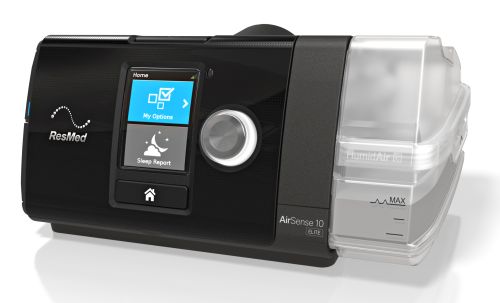Hose Wars, Part 1: Overview

About a year or so ago, the bottom began to fall out of my supply of personal energy. At the time I assumed it was due to my age, or to all the effort I was pouring into our move down here from Colorado Springs, selling the Springs house, fixing up our Scottsdale house, and so on.
Now, virtually all of that stuff is done with...and my energy hasn't come back.
I started a decent new novel at the end of 2016, and while I got off to a pretty brisk start, I'm now 42,000 words in and making little progress. I have other projects that I've done some work on, however, writing is the most difficult thing I do. It's also the most important to me personally. If something starts getting in the way of my writing, I have to get to the bottom of it.
So it was that in February of this year I did a sleep study. I'd had one done at a Colorado Springs sleep clinic in 2010, but the wires and electrodes and everything kept me awake so much of the night that the pulmonologist declared the study inconclusive. To have a sleep study, well, it helps to be able to sleep.
Sleep study tech has gotten way better in the last eight years. I went down to the sleep lab and picked up a gadget that was something like a stiff but adjustable plastic headband. The part that contacted my forehead had a tacky, silicone-y feel to it, and embedded in the silicone were several electrodes and an LED oximeter. There were no wires and no separate electrodes to get tangled up in, like I had in 2010. The electrodes provided some EEG functionality, and the oximeter continuously monitored my blood oxygen, which is an issue I've had for some years. (It was one reason we no longer live at 6700 feet.)
The headband gadget was remarkably comfortable, at least compared to the ratsnest they trussed me up in back in 2010. I was able to sleep on my side, which I've done now for probably forty years. (When I sleep on my back I tend to compress the ulnar nerves in my arms, which makes them go numb and then prickly when I wake up.) I took a new-model sleeping pill (I'll come back to that) and managed to sleep for almost the entire night while the headband gathered data.
The good news ended there. I returned the headband device to the sleep lab, where they downloaded the data and sent the reports to my pulmonologist. I had an AHI of 36, which means I stopped breathing an average of 36 times an hour across the seven hours that I slept with the thing on my head. Basically, I stopped breathing every...two...minutes.
No wonder my blood oxygen was excursing down into the low 80s.
Breathing is good, and tech steps in where nature fails. I was given a prescription for a ResMed AirSense 10 Autoset APAP device (above) and was fitted with a couple of face masks. Laying hands on the actual machine involved a surreal struggle with insurance paperwork, but I finally got it, and about ten days ago I started using it. For the first week, my average AHI was...3.67. That's literally an order of magnitude better than what the headband reported. Last night was my best night yet, with an AHI of only 2.44.
The AirSense 10 records data on a standard SD card. There's a clever open-source reporting utility called Sleepyhead that you can install under Windows, Mac, or Linux. There's a Linux binary for Ubuntu 14.04, or you can rebuild from source. Here's the wiki for the software, with a link to the user guide. (The software is written in C++, alas, or I'd be tempted to tinker it.)
Sleepyhead aggregates your data by day, week, or month (or just "always") and presents a number of graphs for the stats gathered by the machine. There's also a feature to report oximetry data, but I don't have a recording oximeter yet and haven't tried that feature, which is described as "cranky."
I've read a number of people report that starting in on CPAP made them feel like ten-year-olds again. This has never been a longing I've had (what, go through puberty twice? I think not!) and in truth the improvement I've felt so far has been, speaking charitably, incremental. The road has been rocky, and I'm going to have to divide the full story into several entries. Stay tuned.